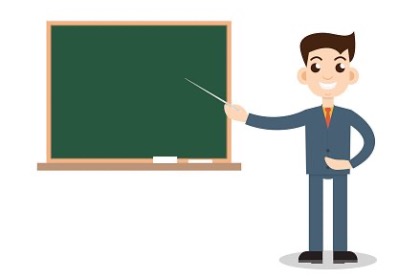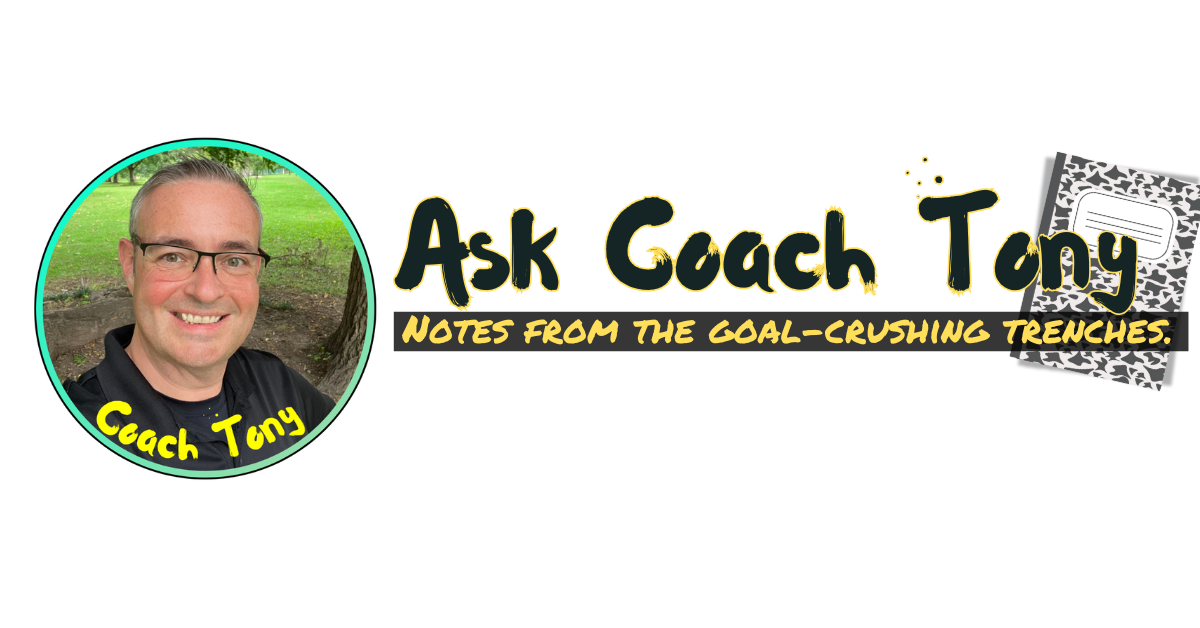In Ask Coach Tony, you can put my Operation Melt coaching to the test by asking me questions about how to achieve your goals.
Because a question asked by one is often a question had by many, I am regularly sharing these answers via the Operation Melt blog.
Are you ready for a dad joke?
I offer you this "dad joke" as a light "amuse-bouche" to entertain your mind before we get serious. My dad joke may be groan-worthy, but it's worth every penny you paid for it, right?
I went to the hospital today and told the doctor, "I've been bitten by a wolf." The doctor asked, "Where?" I replied, "No, just a normal wolf."
How To Choose To Rise Above Unexpected Adversity
How are you choosing to feel today?
If you are a long-time reader, you know I believe in the concept of the R-Factor (created by Focus 3). The R-Factor is represented by the equation E+R=O. This equation means that events of our lives, combined with our response to those events, produce the outcomes we realize.

My alternative definition of E+R=O goes like this… Shit happens in our lives, and you don’t always get to choose when it does. But we do get to choose how to respond when shit inevitably happens. Make sense?
Today’s Ask Coach Tony is a real-life case study of how I used the R-Factor to choose my response to shitty events.
Reality Bites
I had just finished a meeting and had an hour before an eagerly anticipated session with a coaching client. As is often the case, I used my break to go for a walk and get some exercise on a beautiful fall afternoon. So far, so good… right?
I was at 1.87 miles and thought about heading home to prepare for my session. Instead, I wanted to get a little extra distance for a full two-mile walk. I decided to walk an additional block. Just one street past where I live; nothing crazy.
As I turned the corner, just one block from home, I heard a dog barking – not out of the ordinary for an island with many dogs. I didn’t think anything of it and kept walking.
Next thing I know, an angry, barking, snarling dog comes running at me. That’s not a common occurrence, but it wasn’t the first time it had ever happened. I stopped walking, stood still and didn’t make eye contact with the dog. In the past, this has been the recipe for deescalating a dog and not appearing as a threat or prey to the dog.

That didn’t work this time.
The dog lunged at me, attacked me and got a good bite on my leg, causing me to fall to the ground.
This was when the owner ran out and got her dog back into her house.
I stood up and thought I was ok, but I quickly noticed the blood starting to form, and I hurried home to treat the wound.
The rest of the day included home wound care, a visit with the sheriff and a trip to the emergency room when we couldn’t get the bleeding to stop. I discovered this as I started bleeding through my jeans at dinner.
Needless to say, this is not how I planned to spend my day or my evening.
Getting My Rs in Gear
In the face of this incident, I had a choice. I could have taken the low road (“below the line” in the R-Factor vernacular):
- Been angry withthe dog and his owner.
- Said rude things to the owner.
- Been vindictive when talking with the sheriff.
- Been negative, pissed off and impatient at the hospital.
All those reactions would have been perfectly justifiable.
But I took a different route, I intuitively applied the six-step R-Factor process:
- Press pause
- Get your mind right
- Step up
- Adjust and adapt
- Make a difference
- Build skill
Step 1: Press Pause
Immediately following the attack, I paused to assess the situation and determine what response was needed. This included asking myself a few questions:
- What just happened?
- Am I out of immediate danger?
- Am I seriously injured (which I thought was not the case)?
- What do I need to do now?
Step 2: Get Your Mind Right
As I assessed the situation, I considered my next steps.
I had to decide how to interact with the dog’s owner. I knew I needed her information and support. With a healthy dose of empathy, I could also see the owner was scared and upset. This was a freak accident.

I knew I wanted to be me, not “that guy” who reacts with in-your-face anger. That’s not who I choose to be… ever.
Step 3: Step Up
It was time for action.
I knew I needed to react with urgency to evaluate and treat my wound. I went home, applied basic first aid to myself, and then explained the situation to my wife. Then she helped me clean and bandage.
I needed to get smart about what happened next. This was my first-ever dog attack, and outside of first aid, I wasn’t sure what I needed to do. So, I went online (to reputable sites, not attorneys) and informed myself. Then, I followed the recommended steps.

I needed the owner’s information, so I cautiously returned to the dog owner’s house and verified it was safe. She saw me approaching and came out to meet me. I got her details.
With the owner’s information in hand, I contacted the sheriff to report the incident and make a report. They quickly sent a deputy and sergeant to meet me at my house. I kept myself “above the line” when talking to them and wasn’t angry. I calmly reported the facts with self-restraint and provided the details the sheriff needed, including removing my bandage and allowing him to take photos.
Step 4: Adjust and Adapt
I thought the situation was done after speaking to the sheriff, but I was wrong. When he photographed the wound, he warned me that I might need stitches because it was continuing to bleed.
We rebandaged the wound, and I laid still for a while to allow it to stop bleeding. Then we went to dinner. Again, I thought I had moved from treatment to healing. Again, I was wrong. I discovered I was bleeding through my pants and needed to go to the hospital.

I continued to adjust and adapt as the situation evolved.
Step 5: Make A Difference
At the hospital was another opportunity for above-the-line behavior, and it was time to make a difference for me and others. It was time to be me.
I wasn’t frustrated, impatient, nervous or angry – what good would have come from that?
My trademark humor and personality were on full display. I joked with the doctor about what to expect with the next full moon. I joked with the nurse when she asked me to roll up my sleeve for my tetanus shot, telling her it was time for a gun show. I even got caught dancing around in my underwear by a nurse.

I didn’t want this accident and trip to the hospital to change who I am. I also wanted to make sure I helped the helpers in the hospital by giving them a positive experience. Plus, I always love a fresh audience for my Tony-ism.
Step 6: Build Skill
Finally, as I was journaling the next morning, I reflected on the previous day’s events and completed a mental retrospective exercise. I asked myself:
- What did I do well?
- What could I have done better?
- What can I do to turn this into a teachable coaching moment – beginning with making it a blog topic.

This approach doesn’t only apply when you experience a trauma or some other incident. In every interaction and experience in our lives, we have to choose how we want to respond. Even if you trust your response to autopilot, you are still making a choice.
By practicing above-the-line decision-making when faced with small events, you will build the skill to do so automatically in high-pressure moments. By keeping your ego and other below-the-line responses in check, you can ensure you are being the person you want to be. It is all about not letting your bad day become someone else’s bad day. We can all agree that would make the world a better place, right?
Do you need help creating goals that work and identifying the behaviors you need to embrace to make them happen?
Do you want a partner to help you practice these R-Factor steps so you can show up as the person you want to be?
Let’s talk about how coaching could benefit you. I am a certified master life coach and a health coach and would be honored to help.
I believe in you; let me help YOU believe in you!

Meet Coach Tony
Tony Weaver is a master life coach, technologist, consultant, writer, and founder of Operation Melt.
He helps project managers and other left-brained high-achievers pursue their biggest goals.
Through free resources, personalized coaching, and his proven Project Manage Your Life system, Tony empowers clients to move their dreams from “someday” to success… one step at a time.
Learn more about Project Manage Your Life, the system my clients and I use to crush our goals, at OperationMelt.com/PMYL/
Ready to Move Your Goals from Someday to Success?
Sign up for free access to exclusive resources, updates, and your FREE full copy of Project Manage Your Life … the proven system to achieve your biggest goals one step at a time.




 Meet Coach Tony
Meet Coach Tony